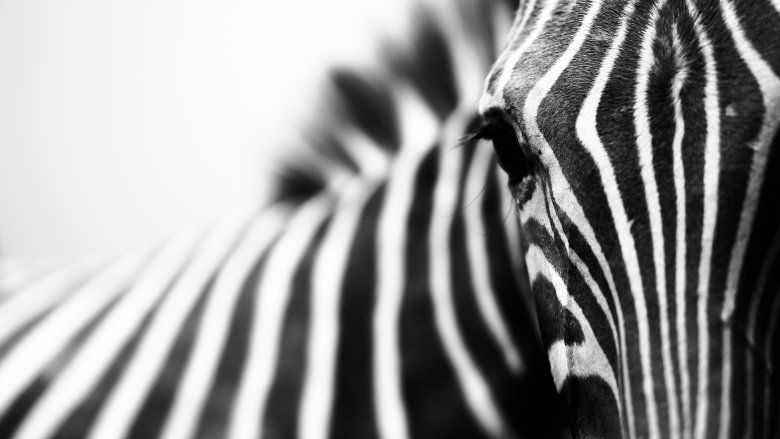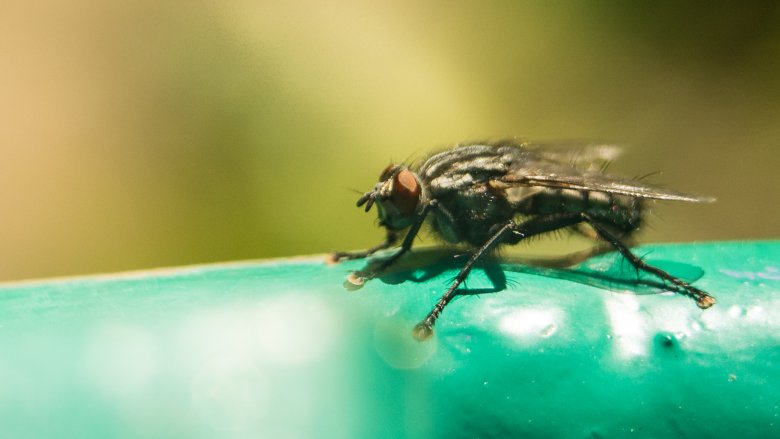The Reason Zebras Have Black And White Stripes
Science has finally cracked one of life's great mysteries. No, it's not the meaning of life (sorry). It's that profound question we've all spent time pondering: Why do zebras have those crazy stripes?
According to The Atlantic, science has been puzzling over this question for just as long as regular people have. Perhaps those stripes help camouflage them in the tall grass? Nope. That theory got knocked out when a University of Calgary study showed that hyenas don't even see the stripes until they're practically on top of the zebras.
Maybe the stripes provide some kind of air circulation, since black heats up faster than white? Nope. When scientists measured the temperatures inside water drums wrapped with zebra hides, they found that the water was just as warm as it was in the drums wrapped with horsehide. We'll just try to not think about where they got the hides for that ethical little experiment.
Maybe the stripes are there to confuse predators, then. When a bunch of animals are running around flashing that much black and white, it's enough to give anyone a seizure. No one has officially disproven that one, but they have come up with another, more practical explanation.
And the reason for zebra stripes is... flies
Zebras, not unlike beer-drinking humans at barbecues, are particularly vulnerable to biting insects. They have short hair, making it easy for bloodsuckers to land and find a vein. And the bloodsuckers in Africa aren't just annoying — they are nasty, disease-carrying fiends. The tsetse fly, for example, carries trypanosomiasis, which can be lethal to equines. So animals that are somehow able to thwart biting insects have a distinct advantage.
For zebras, it's the stripes. Researchers were able to confirm this by putting striped blankets on horses, and then watching while the flies trying to land on them became very disoriented. Flies would approach the striped horses as often as the solid colored animals, but were less capable of actually landing, possibly because the stripes somehow mess with their vision or their tiny brains. Perhaps they confuse the white stripe as a space between two twigs and fly right into it — no one's really sure. What does seem clear is that those stripes are more than just a cool pattern. They probably contribute to the longevity of the animal and quite possibly to a much less irritating life. Maybe we should all wear stripes to summer barbecues.

